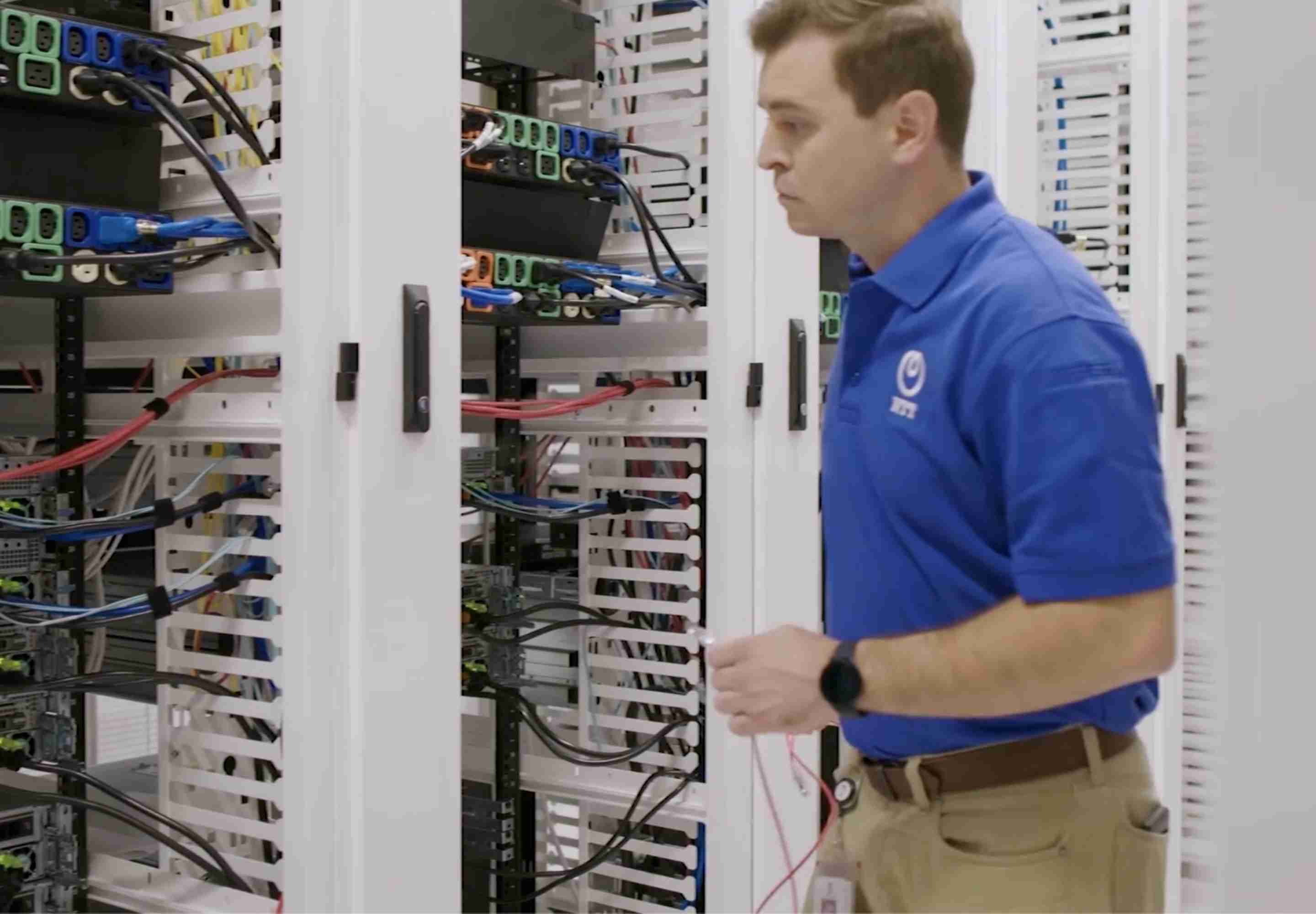-
Featured services
Think beyond the robots
The successful integration of AI and IoT in manufacturing will depend on effective change management, upskilling and rethinking business models.
Read the blog -
Services
View all services and productsLeverage our capabilities to accelerate your business transformation.
-
Services
Network Services
-
Services
Cloud
-
Services
Consulting
-
-
Services
Data and Artificial Intelligence
- AI and Intelligent Solutions
- Data/AI Strategy and Program
- Data Engineering and Platforms
- Data Governance and Management
- Data Visualization and Business Decision
- GenAI Consulting
- GenAI Platforms
- GenAI Industry Services
- GenAI Infrastructure Services
- GenAI Value Transformation
- View Data and Artificial Intelligence
-
Services
Technology Solutions
-
Services
Global Data Centers
-
Services
CX and Digital Products
-
Services
Application Services
-
Services
Sustainability Services
-
Services
Digital Workplace
-
Services
Business Process Services
-
Services
Generative AI
-
Services
Cybersecurity
-
Services
Enterprise Application Platforms

Accelerate outcomes with agentic AI
Optimize workflows and get results with NTT DATA's Smart AI AgentTM Ecosystem
Create your roadmap -
-
-
Insights
Recent Insights
-
The Future of Networking in 2025 and Beyond
-
Using the cloud to cut costs needs the right approach
When organizations focus on transformation, a move to the cloud can deliver cost savings – but they often need expert advice to help them along their journey
-
Make zero trust security work for your organization
Make zero trust security work for your organization across hybrid work environments.
-
-

Master your GenAI destiny
We’ll help you navigate the complexities and opportunities of GenAI.
Explore GenAI -
-
Master your GenAI destiny
We’ll help you navigate the complexities and opportunities of GenAI.
Explore GenAI -
Discover how we accelerate your business transformation
-
About us
CLIENT STORIES
-
Liantis
Over time, Liantis – an established HR company in Belgium – had built up data islands and isolated solutions as part of their legacy system.
-
Randstad
We ensured that Randstad’s migration to Genesys Cloud CX had no impact on availability, ensuring an exceptional user experience for clients and talent.
-
-
CLIENT STORIES
-
Liantis
Over time, Liantis – an established HR company in Belgium – had built up data islands and isolated solutions as part of their legacy system.
-
Randstad
We ensured that Randstad’s migration to Genesys Cloud CX had no impact on availability, ensuring an exceptional user experience for clients and talent.
-

Everest Group PEAK Matrix® Assessment
NTT DATA is a Leader and Star Performer in the Everest Group Sustainability Enablement Technology Services PEAK Matrix® Assessment 2024.
Get the Everest report -
- Careers
Topics in this article
Bruno Berti, VP of Product Management, and Chris Sachse, Global Sales Engineer, sat down for a Q&A session during the virtual grand opening of our new Chicago and Hillsboro Data Centers in February. Watch the video for the entire Q&A, or check out a few top questions and answers listed below.
Q: What does the Oregon Cleaner Air Certification mean and how does it fit within our sustainability plans and objectives?
A: The Cleaner Air Certification includes requirements above and beyond the federal Clean Air Act, in order to ensure that industrial progress doesn't come at the expense of public health. We’re the only data center in the Hillsboro market to have received that certification. For our clients, it offers evidence of our commitment to sustainability and our commitment to the communities that we operate in.
Q: What are some of the tax benefits for clients in both the Hillsboro and Chicago markets?
A: Illinois has implemented a tax incentive program that's a sales and use tax exemption, allowing our clients with a memorandum of understanding to eliminate a 7.5% tax on materials that are typically installed during the fit-out of our client spaces.
In addition, Hillsboro has a property tax exemption that our clients can participate in and receive an annual tax abatement on equipment housed in the data center.
Q: Can you speak to the new subsea cabling product in Hillsboro and the connections that are specific in Oregon?
A: One of the main benefits of the Pacific Northwest as a data center location is access to a lot of subsea cables that connect North America to the Asia Pacific region, and it’s one of the main reasons why we selected Hillsboro as a strategic expansion location. There are tons of cables with thousands of fibers used to facilitate communication between these two markets and continents. We tapped one of those cable bundles and have created an opportunity for our customers to access PC-1, which is a specific cable fiber bundle that connects our data center and the clients in our data center to Tokyo, Japan and all the data centers in that surrounding market.
Clients can contract with us for either a 10 gig or 100 gig service on that cable, and it's turnkey. All they need to do is contract with us. We make it part of their colocation service, and they have access to that fiber that connects both regions.
Q: Are all of our data centers connected globally, including the new ones?
A: All of our data centers in the Americas are interconnected through a product we call Campus Connect, so customers can connect to themselves and to other customers if they're a client of the data center. Each one of our Global Data Center regions have that same connectivity capability. And with NTT, we've enhanced that to allow connectivity outside of regions.
Within each data center, we have a significant amount of data center connectivity options. Most importantly, we're carrier neutral. We allow any and all carriers to come into our data center to service our customers, and we provide connectivity options to those. We also have our own product that's a blend of industry leading internet providers that we can offer to our customers. We offer a full suite of connectivity options, with the subsea cable in Hillsboro being the latest.
Q: What are we offering to clients in terms of services in and around the data center, as we try to control access in the time of COVID-19?
A: We’ve really ramped up our remote hands and eyes staff and services to support our clients, especially at first when we didn't want a lot of people in our data centers. We've got trained staff within the data center that can go into our client environments and provide what we call ‘remote hands’, which perform the physical aspects of rebooting servers, checking lights, or maybe moving cabling around based on customer instructions, so that eliminates the need for a client to come on-site.
We did a report at the end of last year to see what differences have been since COVID-19 – our remote hands usage increased by more than 35%. That's pure usage and hours over the same period a year before.
Q: What are we doing to service both our large and small clients?
A: We understand that no two clients are the same, so what we've done from the start with our design is to try and address the needs of different clients, no matter how big or small they are. That means we have a product that we can sell to a client that needs a single secured cabinet within our shared environment. We also have the ability to provide a secure cage enclosure that can house and support multiple cabinets in any configuration. We have customers who want to pre-purchase an entire vault or take entire floors or buildings, and we've designed our products to be able to meet the needs of all those clients. We try to build a product to meet our client needs, not have a client meet our product needs, which gives our team some flexibility and allows us to have a solution for all the types of opportunities that we're engaged in.

